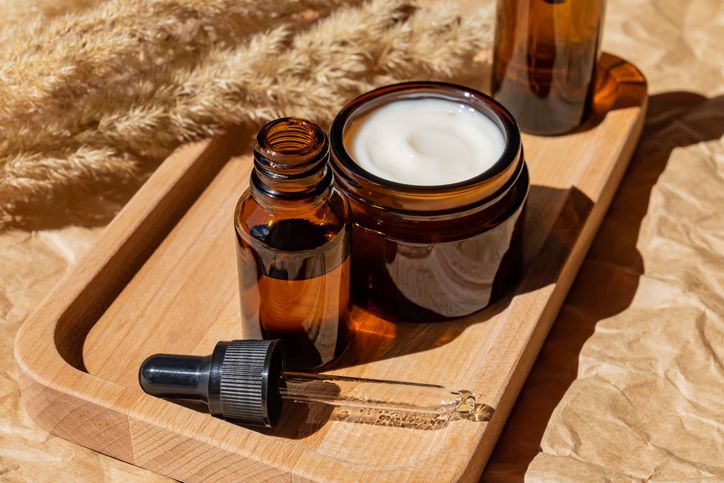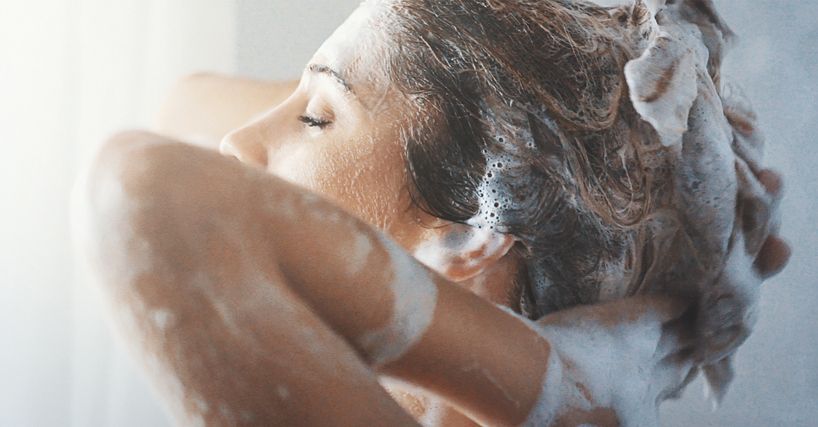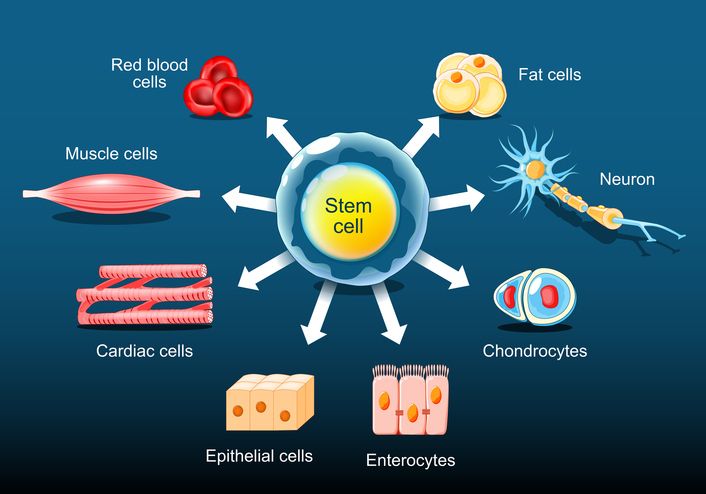Author: Natalie Ng|Updated: 28 May 2025
Acne is a common skin condition that affects many young adults. It shows up in different ways, such as blackheads and whiteheads on the skin’s surface, pus filled pimples, inflamed bumps, or deeper issues like nodular and cystic acne. Some breakouts stay mild, while others turn into more severe acne that leave scars or dark spots. Acne happens when dead skin cells, excess oil, and acne causing bacteria clog hair follicles. Hormonal changes, clogged pores, and excess oil production all make acne worse. Each type of acne needs the right treatment, from over the counter medications like benzoyl peroxide and salicylic acid to stronger acne medication and prescription medications for severe forms. Keep reading to learn the types of acne on the face and how to treat each one effectively, so you can manage breakouts, reduce inflammation, and prevent future acne blemishes.

Why Skin Gets Oily?

The importance of oil balance in skin health
Oily skin happens when the sebaceous glands produce more sebum than your skin needs. Sebum is a natural oil that helps protect and hydrate the skin, but too much can lead to greasy skin, clogged pores, blackheads, and acne breakouts. Genetics, hormones, stress, diet, and even the wrong skincare products can all trigger increased oil production.
How oil production affects different areas of the face
Some areas of the face, like the T zone—forehead, nose, and chin—often have more active sebaceous glands. That’s why these areas tend to get oily faster than other parts of the face. The cheeks, for example, may not produce as much oil, while the nose and forehead can feel greasy just hours after washing. This combination of oily and normal areas is known as combination skin.
Skincare habits that can trigger excess oil
Using harsh cleansers or skipping a moisturizer can actually make oily skin worse. Stripping away natural oils with aggressive products causes the skin to overcompensate, producing even more sebum. The key is using a gentle face wash, balancing the skin with oil-free skincare products, and protecting it with non-comedogenic ingredients like zinc oxide and titanium dioxide in sunscreens.
A good skincare routine supports skin health without irritating or drying it out. By paying attention to the ingredients in your products and sticking to a simple, balanced routine, you can manage oil and keep your skin feeling clean and fresh.
Taking care of oily skin doesn’t require a complicated skincare routine or expensive treatments. Simple, natural ingredients can often work wonders when used correctly. Whether your goal is to reduce excess oil, keep shine under control, or avoid clogged pores, these home remedies can help you build a skincare routine that’s effective and gentle. Let’s explore the remedies that can help control oil production and leave your skin feeling fresh and healthy.

Apple Cider Vinegar Toner
Apple cider vinegar can irritate oily skin
Apple cider vinegar is often used for oily skin because it has natural acids that may help reduce excess oil. But it’s strong—too strong for many skin types. The high acidity can strip away the skin’s natural moisture, disrupt its pH balance, and cause irritation. This can lead to redness, burning, and even more sebum production. Skin that feels dry after using apple cider vinegar might end up producing more oil to make up for the loss, which defeats the purpose.
Using apple cider vinegar safely for oily skin
If you want to try apple cider vinegar, dilute it properly. Mix one part vinegar with four parts water. Apply it gently using a cotton pad, and avoid sensitive areas like the eyes. Start slow—use it once a day at most. Always do a patch test on a small area of skin before applying it to your face.
Keep an eye on how your skin reacts. If it feels dry, tight, or irritated, stop using it. This can be a sign that the vinegar is too harsh for your skin type. For many people, a gentle face wash, oil-free toner, or skincare products made for oily skin will do a better job at keeping the skin balanced without irritation.
Book Now to Experience
Acne Treatment
1 Minute Self-Registration
Date should not be before minimal date

Clay and Aloe Vera Mask
Clay and aloe vera reduce excess oil on skin
Clay helps absorb excess oil, dirt, and bacteria from your skin, while aloe vera soothes and calms irritation. This combination works well for oily skin because it balances oil production without stripping natural moisture. The clay helps keep pores clear, while aloe vera hydrates the skin and reduces inflammation that can lead to blemishes. This mix works best on areas like the T zone and forehead, where oil tends to build up.
Using a clay and aloe vera mask for oily skin
To make the mask, mix two tablespoons of bentonite clay with one tablespoon of aloe vera gel in a non-metal bowl. Add a teaspoon of rose water and stir until smooth. For extra oil-fighting benefits, add two drops of tea tree oil. The mixture should feel smooth but thick enough to stay on your skin.
Apply an even layer to your face, avoiding the eyes. Let it sit for 10 to 15 minutes until it starts to dry. You might feel a tightening sensation as it works. Rinse off with lukewarm water, gently massaging in circles to lift away oil and dirt.
Using this mask twice a week helps manage excess oil, keeps pores clean, and leaves your skin feeling smooth and balanced.

Egg White and Lemon Face Pack
Egg white and lemon tighten pores and reduce oil
Egg whites help tighten skin and reduce the appearance of pores, while lemon juice has natural astringent properties that balance oil production. This combination works well for oily skin because it helps control shine and supports a clearer, smoother texture. The citric acid in lemon also helps prevent clogged pores, which can reduce breakouts.
Using an egg white and lemon face pack for oily skin
To make the mask, separate one egg white into a clean bowl. Add one teaspoon of freshly squeezed lemon juice. Whisk the mixture until it turns slightly frothy, but not stiff. If you want extra oil control, you can add half a teaspoon of honey.
Start with a clean face. Apply the mixture evenly using your fingers or a brush, avoiding the eye area. Let it sit for 15 to 20 minutes, until it feels tight on your skin. You might notice a light tingling sensation—that’s normal.
Rinse the mask off with cool water to help close your pores. Gently pat your skin dry. Use this mask twice a week for best results. It helps manage oil, reduces shine, and makes your skin feel fresher and smoother.

Tea Tree Oil Spot Treatment

Tea tree oil controls bacteria and excess oil
Tea tree oil has strong antibacterial properties that help reduce acne breakouts, while also working to control oil production on the skin. When used properly, it targets oily spots without drying out the entire face. It’s important to apply it carefully, as using undiluted tea tree oil can cause irritation or redness.
Using tea tree oil safely for oily skin
Start by cleansing your face with a gentle face wash and patting it dry. Mix one to two drops of tea tree oil with a carrier oil like jojoba or sweet almond oil. This dilution helps prevent irritation.
Dip a clean cotton swab into the mixture and gently dab it onto oily spots or blemishes, such as the T zone, nose, or chin. Avoid using your fingers, as this can spread bacteria. Let the oil sit for 15 to 20 minutes, then rinse off if needed, or leave it overnight for a stronger effect.
Use tea tree oil as a spot treatment once a day, ideally at night before bed. Always do a patch test before applying it to your face, especially if your skin is sensitive.
Book Now to Experience
Acne Treatment
1 Minute Self-Registration
Date should not be before minimal date

Green Tea Ice Cubes
Green tea reduces oil and soothes the skin
Green tea is packed with antioxidants that help control excess oil and calm the skin. When frozen into ice cubes, it also provides a cooling effect that helps reduce the appearance of pores and leaves skin feeling refreshed. Using green tea in this way can help balance oily skin and prevent breakouts.
Using green tea ice cubes for oily skin
Brew a strong cup of green tea using two tea bags in one cup of water. Let it cool completely. Pour the tea into an ice cube tray and freeze overnight.
Each morning, wrap one ice cube in a thin cloth or paper towel. Gently glide the cube over your face, focusing on oily areas like the T zone, nose, and forehead. Move in small circles for about 30 seconds, then let your skin air dry. Follow with a lightweight, oil-free moisturizer or your usual skincare products.
Use this method daily for best results. It helps reduce oil production, refreshes the skin, and creates a smoother surface for makeup application.

Honey and Oatmeal Scrub
Honey and oatmeal gently exfoliate and balance oil
Honey has natural antibacterial properties that help prevent acne, while oatmeal gently exfoliates the skin and absorbs excess oil. This combination cleanses the skin without stripping its natural moisture, making it a good option for oily skin types. Together, they help remove dirt, dead skin, and excess oil from the pores.
Using a honey and oatmeal scrub for oily skin
Mix two tablespoons of finely ground oatmeal with one tablespoon of raw honey in a small bowl. Stir until it forms a thick paste. For extra oil control, add three drops of tea tree oil and a splash of fresh lemon juice.
Apply the scrub evenly to your face using gentle, circular motions. Focus on oily areas like the forehead, nose, and chin. Avoid the eye area. Let the scrub sit for five to ten minutes to allow the ingredients to work on the skin. Rinse off with lukewarm water, massaging lightly as you go.
Use this scrub once or twice a week. It helps keep skin smooth, prevents clogged pores, and leaves the face feeling clean without irritation.

Cucumber and Mint Cooling Treatment

Cucumber and mint refresh oily skin and tighten pores
Cucumber helps cool the skin, reduce puffiness, and tighten pores, while mint provides a refreshing sensation and can help balance oil production. This treatment is a natural way to soothe oily skin, especially when it feels hot, greasy, or irritated.
Using cucumber and mint for oily skin
Blend half a cucumber with 8 to 10 fresh mint leaves until smooth. The mixture should feel light and slightly watery, not too thick.
Apply the paste evenly across your face, focusing on the T zone, nose, and other oily areas. Let it sit for 15 minutes while you relax. The cooling effect helps calm the skin and control oil.
After 15 minutes, rinse your face with cool water and pat dry with a clean towel. This treatment works best when used once or twice a week, especially during hot or humid weather. It helps keep skin fresh, reduces shine, and supports a balanced complexion.
Book Now to Experience
Acne Treatment
1 Minute Self-Registration
Date should not be before minimal date

Neem Leaf Extract Solution
Neem leaf extract balances oil and fights bacteria
Neem leaf extract is known for its antibacterial and anti-inflammatory properties, which can help manage oily skin and prevent breakouts. It helps control sebum production, keeping skin from getting too greasy during the day. Regular use can also reduce redness, irritation, and the risk of clogged pores.
Making and using neem leaf extract for oily skin
Boil two tablespoons of fresh neem leaves in two cups of water until the liquid reduces by half. Let the solution cool completely, then strain it into a clean container. Store it in the refrigerator for up to three days.
Apply the cooled neem solution with a cotton ball to oily areas like the T zone, nose, and chin. Use it twice a day—once in the morning and once at night. Avoid applying too much; a light layer is enough.
Neem extract helps keep pores clear, prevents buildup of dirt and oil, and leaves the skin feeling clean without stripping its natural moisture. Always d

Tomato and Fuller’s Earth Pack
Tomato and Fuller’s Earth may reduce oil, but with caution
Tomato and Fuller’s Earth are often used in DIY skincare to reduce oil and tighten pores. Tomato has natural acids that may help manage excess oil, while Fuller’s Earth can absorb oil and draw out impurities. But these ingredients can also cause irritation or sensitivity, especially if you have delicate skin.
Using tomato and Fuller’s Earth for oily skin
To make this pack, mash half a ripe tomato and mix it with two tablespoons of Fuller’s Earth. Add a few drops of water if needed to form a smooth paste.
Apply a thin layer to your face, avoiding sensitive areas like around the eyes. Let it sit for 10 to 15 minutes, or until the mask dries. Rinse off with cool water and pat your skin dry.
This mask is best used once a week, as it may be too drying for frequent use. If you experience redness or irritation, stop using it and switch to gentler skincare products.

Rice Water and Rose Toner
Rice water and rose help balance oil and refine pores
Rice water is rich in amino acids and minerals that help balance oil production and support healthy skin. Rose water works as a gentle astringent, helping to tighten pores and reduce shine. This combination is soothing and effective for oily skin, leaving it fresh without feeling dry or tight.
Making and using rice water and rose toner for oily skin
To prepare the toner, soak half a cup of uncooked rice in two cups of water for 30 minutes, stirring occasionally. Strain the liquid into a clean container, then mix in two tablespoons of rose water.
Apply the toner with a cotton pad to clean, dry skin, focusing on areas prone to oil like the T zone and nose. Store the toner in the fridge for up to one week and use it twice daily—once in the morning and again at night.
This natural toner helps manage excess oil, refines pores, and leaves your skin feeling cool and refreshed. It’s a simple addition to your skincare routine that supports a balanced, healthy complexion.
Book Now to Experience
Acne Treatment
1 Minute Self-Registration
Date should not be before minimal date

Professional Acne Treatment for Oily Skin
If you’ve tried home remedies but still struggle to get rid of an oily face, professional treatments can make a real difference. New Beauty’s Acne Treatment is designed to target the core problems of oily skin—excess sebum, clogged pores, and bacteria. It helps control oily skin by using a deep-cleansing process that removes excess oil, dirt, and dead skin cells, which are the main causes of acne breakouts, blackheads, and blemishes.
This treatment works by combining dual spiral suction and drainage technology to cleanse the skin thoroughly. It clears out the pores, balances natural moisture, and calms the sebaceous glands, which are responsible for increased oil production. At the same time, a medical-grade hydrating serum is infused into the skin to support a healthy skin barrier, reduce shine, and encourage collagen production for a clearer, smoother complexion.
The Acne Treatment is an effective solution for anyone dealing with oily skin, clogged pores, and frequent acne breakouts. It goes beyond daily skincare routines like gentle face wash or oil-free moisturizers by providing a deep cleanse that tackles oil production at the source.
Benefits of the Acne Treatment include:
• Helps manage excess oil and prevents future breakouts
• Reduces the appearance of blackheads, whiteheads, and acne scars
• Calms oil glands and restores the skin’s natural water-oil balance
• Safe, non-invasive, and suitable for most skin types
Book Now to Experience
Acne Treatment
1 Minute Self-Registration
Date should not be before minimal date
FAQ
1. Why does my face get oily during the day even after cleansing in the morning?
Your face produces natural oils through sebaceous glands to protect and moisturize the skin. For people with oily skin, these glands can be overactive, leading to more sebum than the skin needs. Hormonal changes, stress, heat, and even certain skincare products can trigger increased oil production. Using a gentle face wash and avoiding harsh cleansers that strip the skin of moisture can help keep your skin’s oil levels balanced.
2. Can wearing makeup cause oily skin to get worse?
Wearing makeup, especially if it’s not oil-free or non-comedogenic, can trap excess oil, dirt, and bacteria in the pores. This may lead to clogged pores, blackheads, and acne breakouts. To control oily skin while wearing makeup, choose products labeled as oil-free or with ingredients like zinc oxide and titanium dioxide, which help absorb excess oil without irritating the skin.
3. Does my diet affect oil production on my face?
Yes, diet can influence oil production. Foods high in refined sugars, dairy, and processed fats can trigger hormonal changes and inflammation, which may increase sebum production and make oily skin worse. Eating a balanced diet rich in whole foods, fruits, vegetables, and healthy fats can help support your skin’s health from the inside out.
4. Can oily skin still get dehydrated?
Yes, oily skin can still become dehydrated. Dehydration happens when the skin lacks water, not oil. Sometimes, oily skin is the body’s response to dehydration—it produces more oil to make up for the lack of moisture. Using a lightweight, oil-free moisturizer helps maintain hydration without making the skin greasy. Look for ingredients like hyaluronic acid, which attracts water to the skin without clogging pores.
5. How can I keep my T zone from getting shiny throughout the day?
To manage shine in the T zone, focus on using a gentle skincare routine that targets excess oil without stripping natural moisture. Cleanse with a mild, foaming face wash, use an oil-free moisturizer, and apply a toner or lightweight product that helps control oil production. Blotting papers can also help absorb excess oil during the day without disturbing your makeup. Adding treatments like clay masks or green tea ice cubes a few times a week can keep pores clearer and reduce overall shine.
Recommended Articles
COPYRIGHT© NEW BEAUTY MANAGEMENT LIMITED 2025. ALL RIGHT RESERVED.




